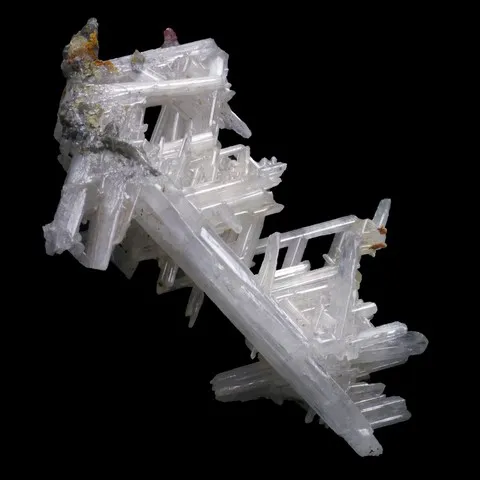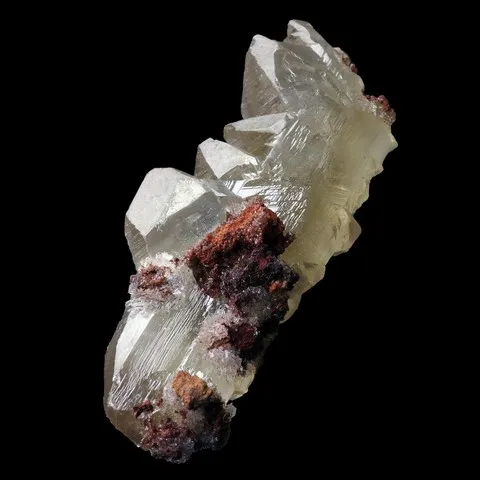CERUSSITE
Class : Carbonates, nitrates, borates
Subclass : Anhydrous carbonates
Crystal system : Orthorhombic
Chemistry : PbCO3
Rarity : Common
Cerussite is the most common oxidized lead mineral and is found in the oxidation zones of lead deposits. It results from the alteration of the galena, often with an intermediate passage through the anglesite, unstable in the presence of CO32- ions. Its development is all the more important as the country is carbonated and the climate arid. It takes its name from the latin cerussa (white lead), name given by Pliny the Elder for synthetic lead carbonate. The cerusite occurs in crystals (sometimes very large) elongated, often flattened, prismatic, pseudohexagonal, also in double pseudohexagonal pyramids (pseudoisechoedrons). They are frequently twinned and can produce spectacular reticulated samples with 60° and 120° angles, or more rarely heart-shaped or "V" twins. Cerusite also consists of compact or earthy masses and sometimes skeletal or stalactitic slats. Translucent to transparent in crystals, almost opaque in masses, the cerusite has a high characteristic specific gravity (more than 6.5). Pure, it is colorless with an adamantine luster, but it is frequently blackened by inclusions of galena, or colored in gray, yellow, green, blue or red by metallic oxides. Cerusite is an important lead ore, and is also highly appreciated by mineral collectors.
Cerussite in the World
Cerussite in France
In France, centimetric crystals have been discovered in several deposits, such as Mayres (Ardeche), Villefranche-de-Rouergues (Aveyron), Farges (Correze), Chaillac (Indre), the most famous being Pontgibaud (Puy-de -Dome). Pretty reticulated cerusites were discovered at the end of 2021 at the Bondons quarry (Lozère).
Twinning and special forms
The twins are universal for this species. Most of the time on {110} and sometimes cyclic, they can generate stars (photo on the right), pseudo-hexagonal or reticular sets. On {130} twins are less common, it generates a heart shape. Both types can coexist on the same sample.
Fakes and treatments
There are no fake records for this species.
Hardness : 3 to 3.5
Density : 6.6
Fracture : Conchoidal
Trace : White
TP : Transparent to opaque
IR : 1.803 to 2.076
Birefringence : 0.273
Optical character : Biaxe -
Pleochroism : Weak
Fluorescence : Yellow,white, blue, green
Solubility : Nitric acid
Magnetism : None
Radioactivity : None













